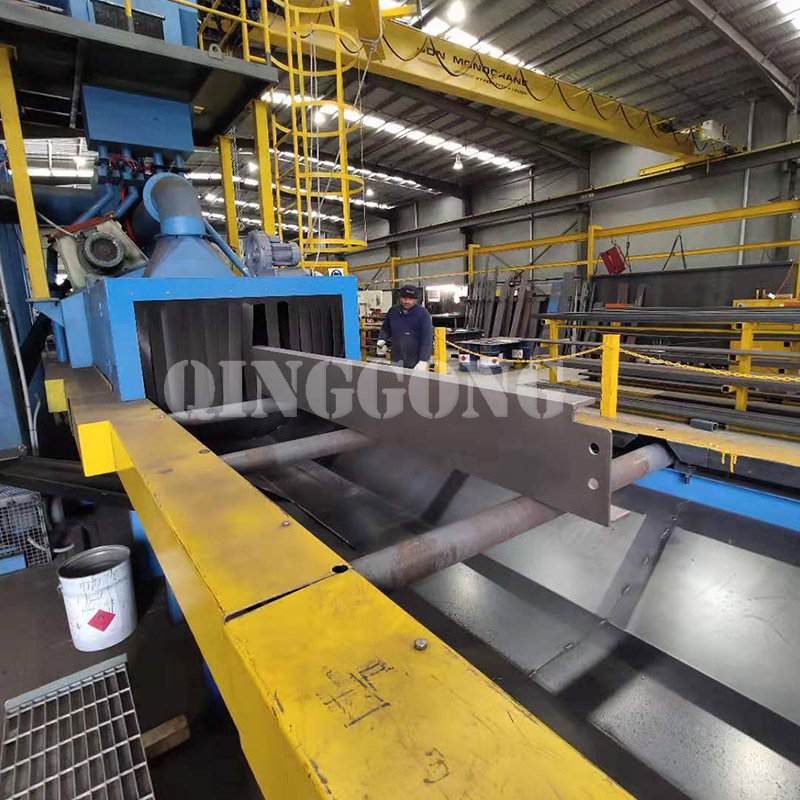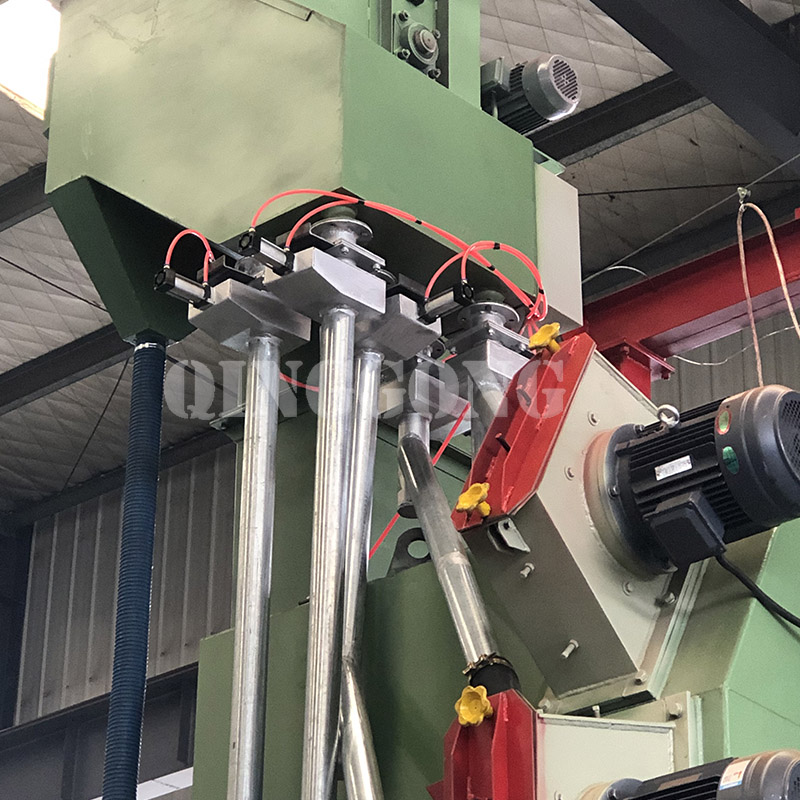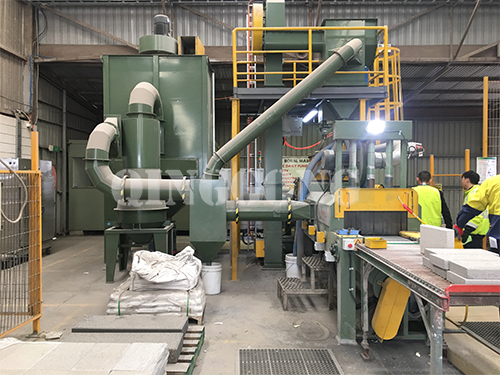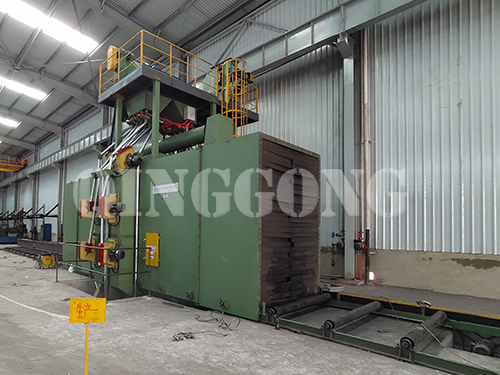Daily maintenance of shot blasting machine:
1. Check whether the fixing bolts on all blast turbines and motors are loose, and if they are loose, tighten them immediately.
2. Check the wear conditions of the wear parts in the blast turbine and the guard plate in the shot blasting chamber, and replace the worn parts in time.
3. Check the blades, they must be replaced when they are half worn.
4. Check whether the pointer position of the control cage is correct.
5. Whether the inspection door of the shot blasting machine is tightly closed.
6. Whether there is air leakage in the dust removal pipeline, and whether the filter bag in the dust collector is dusty or damaged.
7. Whether there are deposits and other debris on the spiral shell and filter screen of the separator, and clear them in time.
8. Check whether the flow curtain of the separator is uniform and a full curtain is formed.
9. Whether the electronically controlled pill supply gate valve is closed.
10. Check whether the status of each limit switch and proximity switch is normal.
11. Check whether the working status of each signal indicator on the console is normal.
12. Check whether the current of the shot blasting motor is within the rated range.
13. Clean the dust on the electrical control box.
14. Check the wear of the pill inlet pipe gasket, the rubber guard plate of the working door and the top seal to avoid the loss of steel shot.
15. Remove the debris on the bottom plate grid to ensure the recovery of steel shots.
16. Check whether the total amount of steel shot in the shot silo is sufficient, and if it is insufficient, add it.
Weekly maintenance of shot blasting machine:
1. Check the abrasive distributor, if it wears more than 3mm, replace it.
2. Check the control cage, and replace it if the opening is larger than 6mm.
3. Check whether the guard plate of the blast turbine is severely worn and misplaced.
4. Check the tension of the V-belt of the blast turbine, it should be able to press about 10mm inward, otherwise it should be adjusted.
5. Check the wear of the partitions and slides, and replace them if necessary.
6. Check whether there are qualified steel shots in the fine powder tube and the bulk tube that can be recycled.
7. Check whether the belt tension, bolts and joints of the hoist are suitable, whether it is off-track and abraded.
8. Check whether there are foreign objects and wear in the screw.
9. Check the grid of the bottom plate and repair any loopholes in time.
10. Check the casing joints to avoid leakage of air and dust.
11. Check the dust on the filter cartridge of the dust collector, and use the pulse blowback mechanism in time.
12. Lubricate the bearing seats of the blast turbines once.
13. Drain the air compressor, gas storage tank and oil-water separator once.

Monthly maintenance of shot blasting machine:
1. Check and adjust the gate valve to make it open and close to meet the current value of the shot blasting motor from 25A to 30A.
2. Adjust the tightness of the drive chain and provide lubrication.
3. Check the tightness of the belt of the bucket elevator and adjust it; check the hopper bolts and tighten them.
4. Check the lubricating oil of the reducer. If it is lower than the specified oil level, add corresponding grease.
5. Check the contact status of each AC contactor and knife switch, and perform soot blowing and cleaning.
6. Check whether the wires and cables of the power and control shot blaster parts are loose and should be tightened.
7. Test each motor separately, listen to whether the sound is normal, and see the no-load current. Each motor should be no less than 5 minutes.
8. Check the wear and fixation of the fan and air duct.
9. Add 2# calcium-based grease once a month to the bearing seats of both ends of the hoist, separator and screw conveyor.
10. Change the oil of the air compressor once a month.
Quarterly maintenance of shot blasting machine:
1. Check the condition of bearings and electric control box, and add grease.
2. Check the wear condition of the wear-resistant guard plate of the sand shot blasting machine.
3. Replace the spindle bearing of the blast turbine and the bearing of the shot blasting motor with new high-speed grease.
4. Check the tightness of the fixing bolts and flange connections of all motors, reducers, fans, and screw conveyors.
Annual maintenance of shot blasting machine
1. Check the lubrication of all bearings (including motor bearings) and add new grease.
2. Replace or weld repair the main chamber body guard plate.
3. Check the reliability of the contact between the PLC and the inverter.
4. Check whether the ammeter is accurate.
5. Check the filter cartridge of the dust collector. If it is damaged, replace it. If there is too much dust, use an air gun to clean it.
6. Perform necessary dredging and repair of air ducts.

 EN
EN
 fr
fr  de
de  es
es  it
it  ru
ru  pt
pt  ar
ar  th
th  pl
pl  ro
ro 


